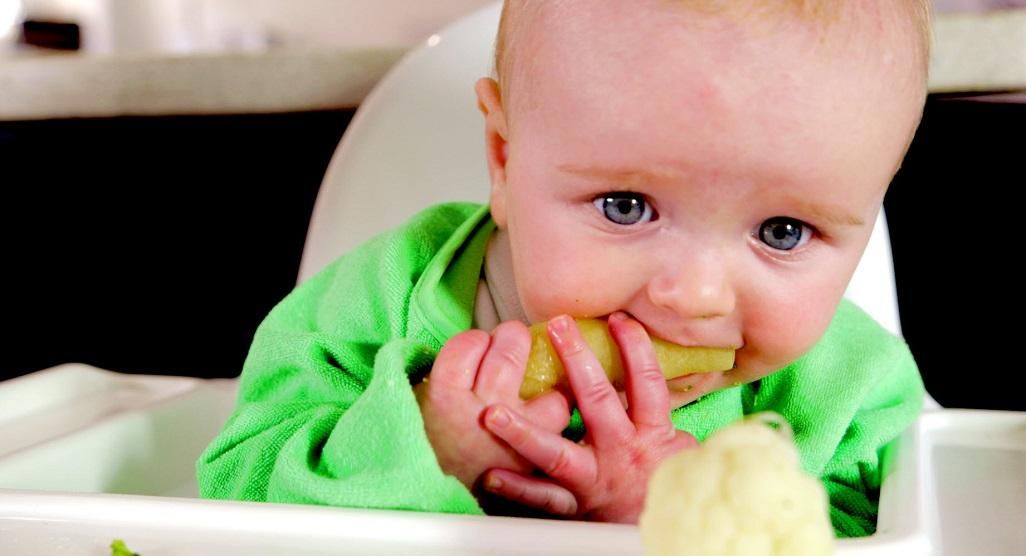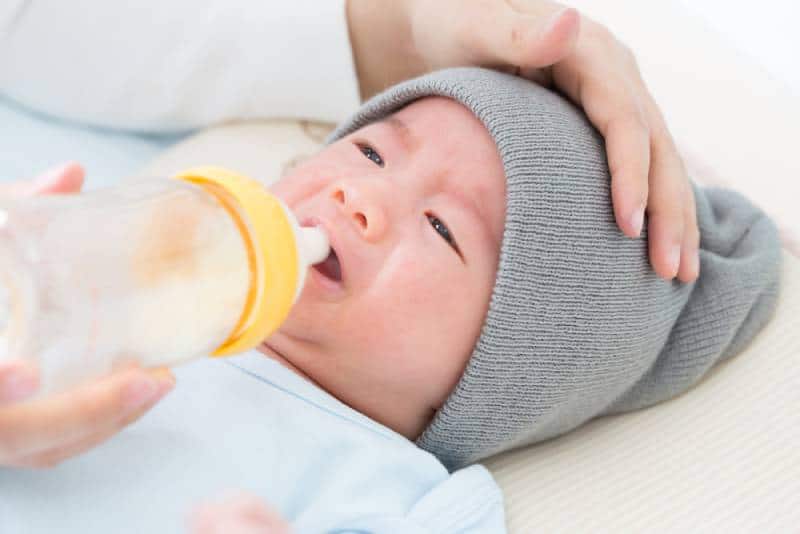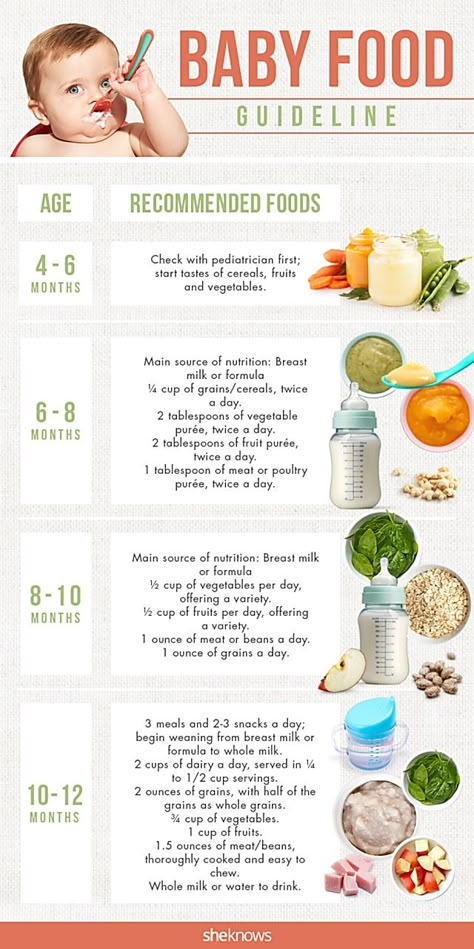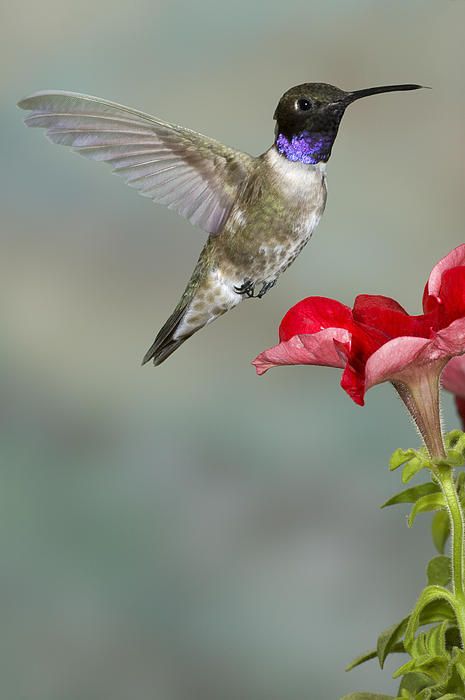What age do you give babies finger foods
Giving Baby Finger Foods at 7-8 Months
Written by Rebecca Felsenthal Stewart
Reviewed by Dan Brennan, MD on August 09, 2022
Month 7, Week 3
featureOnce your baby is a pro at eating soft mashed foods, they may be ready to move on to finger foods around 8 months. They have the dexterity to pick the food up and release it or mash it, and will become more efficient and independent as they master the pincer grip around 9 months. At that point they'll be able to use their thumb and forefinger to pick up the small chunks of food.
Your baby may grab at everything on your plate, but follow these guidelines for healthy and safe feedings.
- Start with menu items like pieces of soft cheese; small pieces of pasta or bread; finely chopped soft vegetables; and fruits like bananas, avocado, and ripe peaches or nectarines. These foods should require minimal chewing, as your baby may not yet have teeth. Do NOT let them have hot dogs, raw vegetables, nuts, meats, hard candy, or sticky textures such as nut butters that have increased choking risks at this stage.
- Introduce new foods one at a time in case there are any concers about allergies.
- Chop all foods into soft, bite-sized pieces, 1/2 inch or smaller.
- Watch out for choking hazards: Avoid round, firm foods like carrots, grapes, and hot dogs and skip anything like raw veggies and peanuts. Raisins and popcorn are dangerous for babies.
- Keep up your formula or breastfeeding schedule, but as your baby eats more solids, they’ll naturally start to take less milk. Your baby needs to start eating more solids and drinking less milk for the nutritional value at this stage.
Your Baby's Development This Week
Your baby is getting stronger and may even be moving around, whether they are sliding around on their belly in reverse, scooting on their behind, or actually crawling forward. If you haven’t childproofed your house already, don’t wait any longer!
You may notice these growing signs of motor development:
- Your baby is probably now able to sit on their own for several minutes, without using their hands for support and they may be able to get up into a sitting position all by themselves.
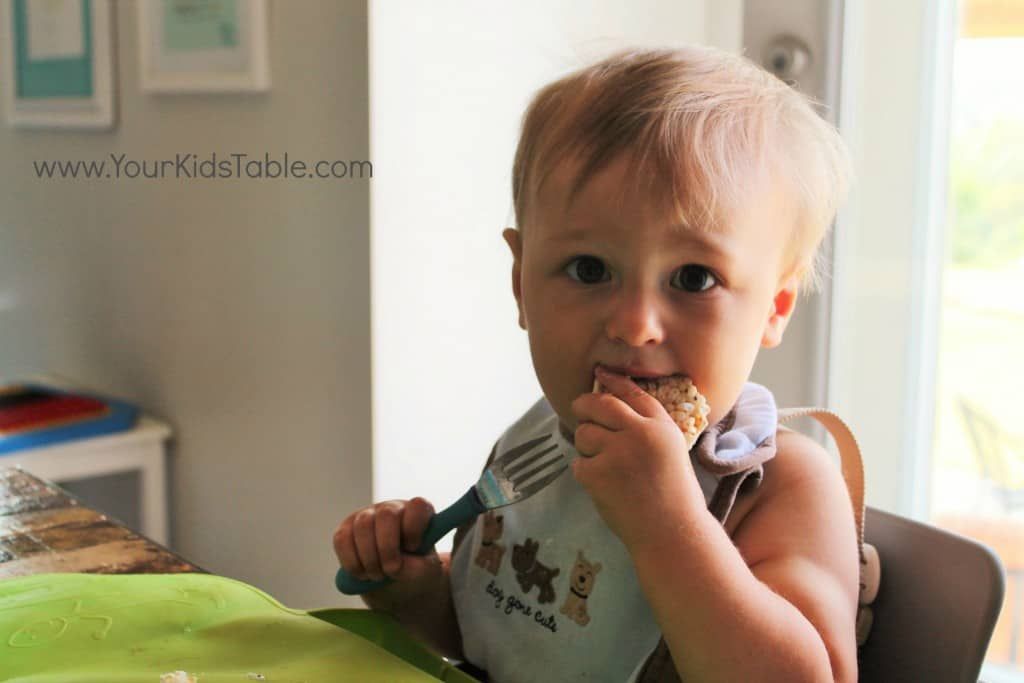
- While you offer them support, they should be able to bounce up and down, and possibly even pull up to a stand.
- Their little hands are increasingly agile -- they are getting better at passing a toy back and forth from one to the other.
You might wonder about:
- Their vision. Your baby should be able to see nearly as far as an adult by now and can track moving objects with their eyes.
- Stranger anxiety. You’re not imagining it: They may fear new people and situations. So give them time to warm up and reassure them if they are upset.
- What they can understand. Your baby might comprehend more than you realize, so it’s important to keep talking to them about everything you’re doing and try to be consistent about the words you use for familiar objects.
Month 7 Week 3 Tips
tips- If food allergies run in the family, talk to your pediatrician about introducing highly allergenic foods like peanuts and eggs.

- Fried foods are not good choices for babies. If you offer them at all, do so rarely.
- Avoid feeding your baby juice unless it is fresh-squeezed.
- By now, your baby’s diet should include grains, fruits, vegetables, and meats, and they should be eating two to three meals a day.
- In addition to rice, barley, or oat cereal, you can introduce grain products your baby can grab, such as toast, crackers, and dry cereal. Avoid any colorful, sugary cereals.
- Sit baby in their high-chair for feeding time. If they eat finger foods while crawling around, they are more likely to choke.
- You’re not done with breast feeding or bottle feeding. Your baby is starting the transition, but breast milk and formula are still key.
- Pureeing or mashing vegetables may make them easier for your baby to eat when they are first transitioning from a liquid diet to solids.
Today on Grow
<blank>Recommended for You
Doctor-approved information to keep you and your family healthy and happy.

- Pregnancy & Baby Bulletin
- Parenting & Children's Health
Best Early Finger Foods for Baby (With Tips, Visuals, and Recipes)
Use this list of safe, nutritious, and easy to eat finger foods for baby to help you know exactly what (and how) to offer at meals and snacks. Plus, find the best first finger foods, troubleshooting tips, and visuals of foods broken down by food group to keep things easy!
Finger Foods for Baby
After baby starts solids and is ready to move onto finger foods, you may feel a little confused by exactly what to serve and how to serve it. Which is totally normal because it can be scary to let baby feed themselves this way and we may not have any experience doing this—or we may have totally forgotten from our last kiddo!
This list of finger foods for baby will cover some great first finger foods to start with, then set you up with plenty of healthy options from each food group.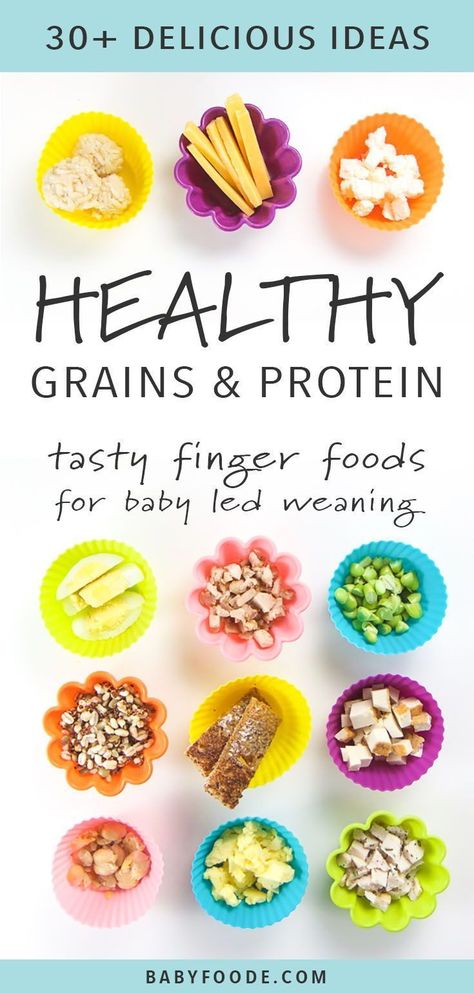
TIP: Find more info on starting solids here and the best foods to start with if doing baby led weaning or purees with baby.
Healthy Baby Food
I love sharing these ideas for baby food since they are easy to prepare and serve and because I know how hard it can be to continue to come up with flavorful and healthy meals and snacks for our little ones. Let me tell you, I’m on my third kiddo and it can be such a challenge to feed him during the chaos of parenting the rest of my crew! These foods are wholesome and nutritious—perfect for your baby.
TIP: I’m a big fan of SpoonfulONE, a company that offers the most complete way to introduce food allergens to our kids. They make mix-ins, puffs, and crackers that are yummy and easy for babies and toddlers to eat. Learn more about their pediatrician-approved baby foods here. (sponsored link)
Best First Finger Foods
When baby is around 9 months, you’ll notice that they’re able to pick up smaller pieces of food with two fingers. This is known as the “pincer grasp” and is a sign that they’re ready to start finger foods. To be clear, when I say “finger foods” I mean small pieces of food that a baby (or toddler) can feed themselves.
This is known as the “pincer grasp” and is a sign that they’re ready to start finger foods. To be clear, when I say “finger foods” I mean small pieces of food that a baby (or toddler) can feed themselves.
Here are some of my favorite ones to start with that are all super soft, safe to eat, and easy to pick up.
- Scrambled egg, broken up into small pieces
- Roasted sweet potato mashed and broken up into small pieces
- Fresh raspberries, broken up into smaller pieces
- Oatmeal, cooked according to package directions and allowed to cool
- Tofu, diced and sauteed lightly or steamed
- Ground beef, chicken, or turkey, broken up into small pieces or lightly mashed meatballs
- Shredded cheese or crumbled goat cheese
- Mashed sweet potato, in little pieces
- Peanut butter puffs
TIP: You can serve the tofu, ground meat, or meatballs in veggie puree from a pouch or a simple marinara sauce for extra moisture and flavor. Learn more about how and why to introduce peanut butter.
Learn more about how and why to introduce peanut butter.
Finger Foods for Baby: Fruits and Veggies
Some of my favorite early fruits and veggies to serve babies are:
- Mashed roasted sweet potato, broken up into small pieces
- Warmed frozen peas, slightly mashed if desired
- Roasted Zucchini
- Diced Roasted Sweet Potato or Butternut Squash
- Fresh blueberries, cut in half or quarters
- Fresh raspberries, broken into small pieces
- Banana, broken into small segments (they are less slippery this way versus slicing them)
- Avocado, diced and mashed slightly (be sure it’s ripe and very soft)
TIP: A good rule of thumb is to serve pieces of food that are about the size of a pea to start and soft enough that they are easy to squish between your fingers. This will be easy for baby to pick up and eat and will also reduce chances of choking.
Finger Food Ideas: Carbohydrates
Offering complex carbohydrates can provide fiber, a variety of textures, B vitamins, and more. Try these with your baby.
Try these with your baby.
- Spinach pancakes (moisten with applesauce or plain yogurt if needed; this recipe is particularly moist and great for babies)
- Oatmeal, cooked according to package directions and allowed to cool
- Baby Puffs
- Peanut Butter Puffs
- Rice (it’s easiest if it’s in little clumps so baby can pick it up; this Coconut Rice or this Cheesy Rice are both good options)
- Baby Banana Muffin
- O cereal (soften in nondairy unsweetened milk or yogurt as needed)
- Baked Oatmeal, diced
Finger Food Ideas: Proteins
Offering proteins will continue to expose baby to a range of nutrients. These are my go-tos for babies newer to finger foods—and toddlers too.
- Shredded cheese (thicker cuts are a little easier to pick up)
- Tofu, diced and sauteed lightly or steamed
- Flaked cooked wild salmon
- Lightly mashed meatballs
- Shredded chicken, cut up finely (we love this Butter Chicken to share with baby)
- Ground beef, turkey, or chicken, broken into smaller pieces
- Lightly mashed beans
- Scrambled eggs, broken up into small pieces
- Diced egg muffins
I’d love to hear any questions you may have, or if you have foods that your babies enjoy that I didn’t include here.
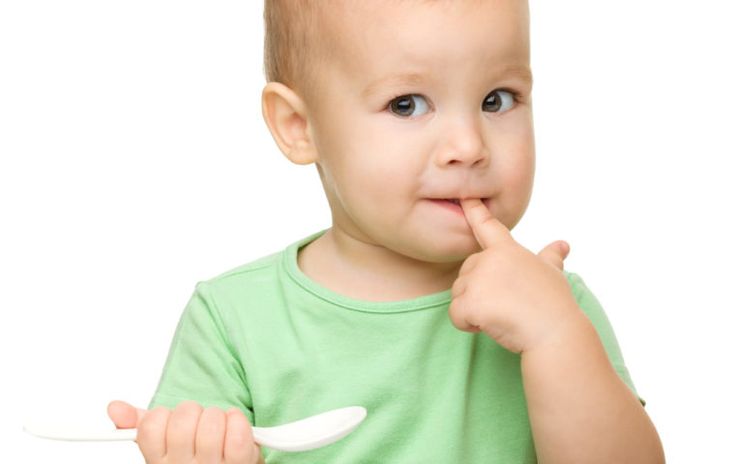 Chime in below in the comments!
Chime in below in the comments!Prep Time 5 minutes
Cook Time 5 minutes
Total Time 10 minutes
Author Amy Palanjian
Cuisine American
Course Baby Food
Calories 124kcal
Servings 1
First Finger Foods (choose 1-3 per meal)
- ▢ 1 Scrambled egg (broken up into small pieces)
- ▢ 1/4 cup Roasted sweet potato, mashed and broken up into small pieces
- ▢ 1/4 cup Fresh raspberries (broken up into smaller pieces)
- ▢ 1/4 cup Oatmeal (cooked according to package directions and allowed to cool)
- ▢ 2 tbsp Tofu (diced and sauteed lightly or steamed)
- ▢ 2 tbsp ground beef, chicken, or turkey, broken up into small pieces or lightly mashed meatballs
- ▢ 2 tbsp shredded cheese or crumbled goat cheese
- ▢ 1/4 cup Mashed sweet potato (broken into little pieces)
- ▢ 1/4 cup Peanut butter puffs
Fruits and Veggies
- ▢ 1/4 cup mashed roasted sweet potato (broken up into small pieces)
- ▢ 1/4 cup warmed frozen peas
- ▢ 1/4 cup Roasted Zucchini
- ▢ 1/4 cup diced Roasted Sweet Potato or Butternut Squash
- ▢ 1/4 cup blueberries (cut in half or quarters)
- ▢ 1/4 cup raspberries (broken into small pieces)
- ▢ 1/4 cup banana slices (broken into small segments—they are less slippery this way versus slicing them)
- ▢ 2 tbsp avocado (diced and mashed slightly—be sure it's ripe and very soft)
Whole Grains and Carbohydrates
- ▢ 1 Spinach pancakes (moisten with applesauce or plain yogurt if needed; this recipe is particularly moist and great for babies)
- ▢ 1/4 cup Oatmeal (cooked according to package directions and allowed to cool)
- ▢ 1/4 cup Baby Puffs
- ▢ 1/4 cup Peanut Butter Puffs
- ▢ 1/4 cup fully cooked rice (it's easiest if it's in little clumps so baby can pick it up; this Coconut Rice or this Cheesy Rice are both good options)
- ▢ 1 Baby Banana Muffin
- ▢ 1/4 cup O cereal (soften in nondairy unsweetened milk or yogurt as needed)
- ▢ 1/4 cup Baked Oatmeal (diced or regular oatmeal broken into little pieces)
Dairy
- ▢ 2 tbsp Shredded cheese (such as mozzarella)
- ▢ 2 tbsp Tofu (diced and sauteed lightly or steamed)
- ▢ 2 tbsp flaked cooked wild salmon
- ▢ 1 lightly mashed meatballs
- ▢ 2 tbsp finely shredded chicken (we love this Butter Chicken to share with baby)
- ▢ 2 tbsp ground beef, turkey, or chicken (broken into smaller pieces)
- ▢ 2 tbsp lightly mashed beans
- ▢ 1 Scrambled egg (broken up into small pieces)
- ▢ 1 Diced Egg muffins
For each meal or snack, choose 2-3 foods from a mix of food groups.
 Aim to include some fat in most meals and protein in many too.
Aim to include some fat in most meals and protein in many too.Prepare the food, cutting into small pieces and/or mashing as needed to make the food easy to eat.
Start with small portions and allow more as baby indicates according to their hunger.
- Store leftovers in an airtight container for 3-5 days in the fridge.
- Many foods you cook for your family will work as baby finger foods—just be sure they are easy to squish between your fingers and the pieces are small and easy to chew.
- Babies very normally make a lot of faces when they eat, so don't assume they don't like something just because they scrunch their nose!
- Flavors and textures can take time to learn to eat, so continue offering foods in small portions even if baby hasn't liked them in the past—and make sure they taste good to you!
Calories: 124kcal, Carbohydrates: 14g, Protein: 7g, Fat: 4g, Saturated Fat: 1g, Polyunsaturated Fat: 1g, Monounsaturated Fat: 2g, Trans Fat: 1g, Cholesterol: 164mg, Sodium: 81mg, Potassium: 344mg, Fiber: 4g, Sugar: 5g, Vitamin A: 9857IU, Vitamin C: 18mg, Calcium: 51mg, Iron: 1mg
Tried this recipe?Rate in the comments and tag @yummytoddlerfood on IG!
Finger food - Encyclopedia Baby food
Viktoria Levchuk©
Finger food is baby food prepared in the form of pieces of boiled soft food so that the child can independently take it and transfer it to the mouth, chew it or swallow it without anyone help and any problems.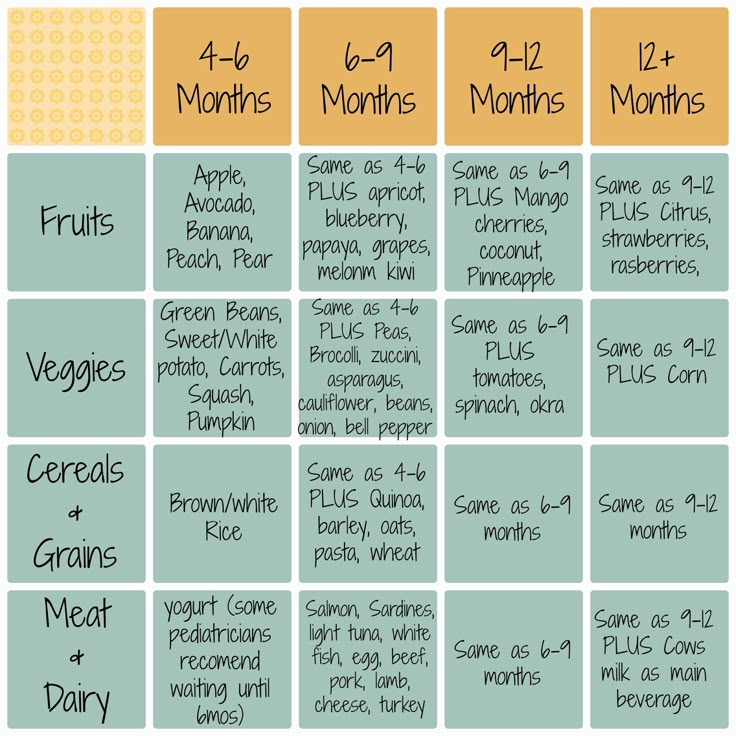
Finger food is a fun way to encourage the development of motor coordination and skills for biting, chewing and self-feeding. Food in pieces should be easy to grasp by children's fingers and long-term storage, and should not contain bones or seeds.
As soon as the child begins to take food with his fingers and put it into his mouth with reasonable hand-eye coordination, then the fun begins! Let your child experiment with soft snacks such as a banana or peach that can be “hand-mashed” to the right consistency. The more a child experiments with finger food, the faster he will masterfully feed himself.
Finger food helps keep a child's food interest. As soon as he begins to feed himself on his own, then new taste horizons open up for him. What child refuses to try to bring the product to his mouth on his own, even if he didn’t really like it before.
Contents:
Very often mothers think at what age should they give finger food to their baby.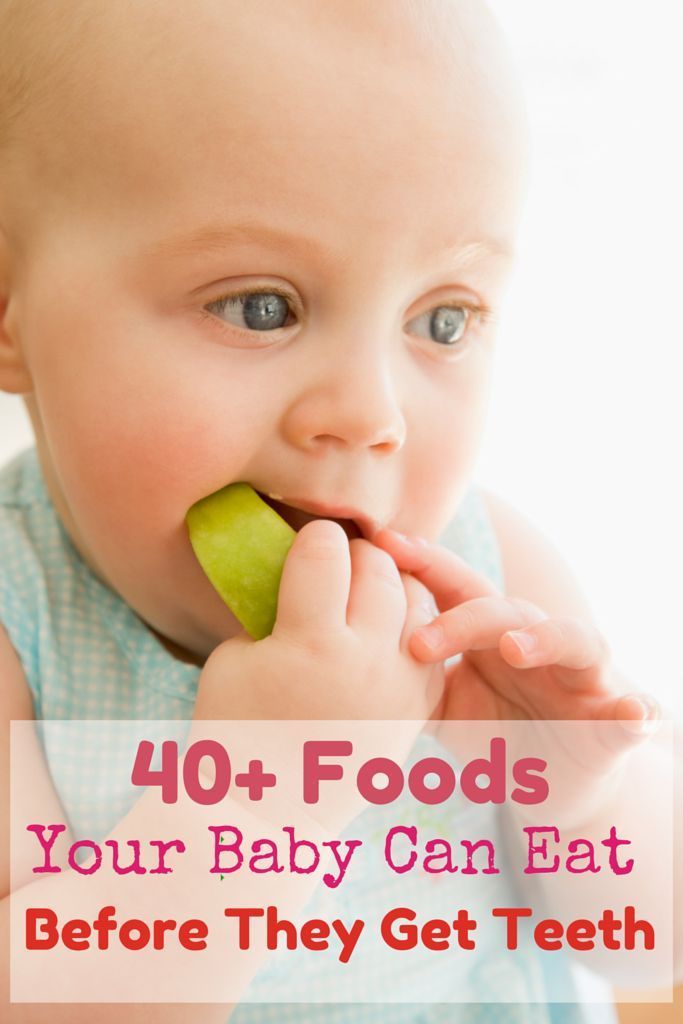
Honestly, even for me it's a difficult question. It's just that sometime between eight and nine months, the baby began to eat small pieces of food. The change in the consistency of food by age is very well described in the WHO recommendation, so it should be guided by.
Food consistency up to a year. Click on me!!!
However, you should not do it blindly and try to feed the baby in pieces at a certain age, perhaps he will not be ready yet. Children are all different, some want food in pieces, almost from the beginning of complementary foods, others are not ready for lumpy food for up to a year or more. Therefore, any decision on finger food is made based on the child and his readiness. An excellent preparation for finger food is a nibbler, which will prepare the child for lumpy food.
The child has no teeth
Click on me!!! A child's gums are incredibly strong, as is the tongue, so the number of teeth is not an indicator of whether to give finger food or not. If the decision has been made to start complementary foods and the baby is doing well with mashed foods, then you can safely start giving small pieces of soft food when the baby is ready for it. At this stage, it is important to let the child try to eat food of a different consistency, more complex, in order to train the maxillofacial apparatus. Thus, the child gradually prepares for the full chewing of food with the help of the entire jaw, teeth and tongue.
If the decision has been made to start complementary foods and the baby is doing well with mashed foods, then you can safely start giving small pieces of soft food when the baby is ready for it. At this stage, it is important to let the child try to eat food of a different consistency, more complex, in order to train the maxillofacial apparatus. Thus, the child gradually prepares for the full chewing of food with the help of the entire jaw, teeth and tongue.
Knowing if finger food is safe for a child
A good rule of thumb to help prevent choking is to avoid anything hard (e.g. raw carrots), round (e.g. whole grapes), sticky (e.g. , spoon of nut butter) or too much gummies (such as gummies). At first, the child is given pieces of food in the form of sticks, which can be easily clamped in the child's chick, later, when the child begins to control the finger grip better, you can move on to cubes. At first, finger food should be soft, boiled and melt in your mouth. As a child learns to manage with such products, it is possible to complicate the task and switch to fresh soft foods, etc.
At first, finger food should be soft, boiled and melt in your mouth. As a child learns to manage with such products, it is possible to complicate the task and switch to fresh soft foods, etc.
Foods that squeeze easily between fingers are good for older children and for younger children. Around 16-18 months, many babies are ready for more complex textures. During this period, cutting food into pea-sized pieces is also a good idea - many babies tend to put large pieces of food in their mouths, so small cubes are used to avoid choking. We always adjust the sizes of products according to the age and eating experience of our own child.
Usually the first finger food is biscuits or baby biscuits, which are very soft and dissolve easily in the mouth. The baby first sucks it, procrastinates, and learns to roll pieces of food in the mouth with the help of the tongue. A little later, when the teeth appear, you can give the product a little harder, for example, a soft apple, some parents play it safe and give a baked apple without a peel.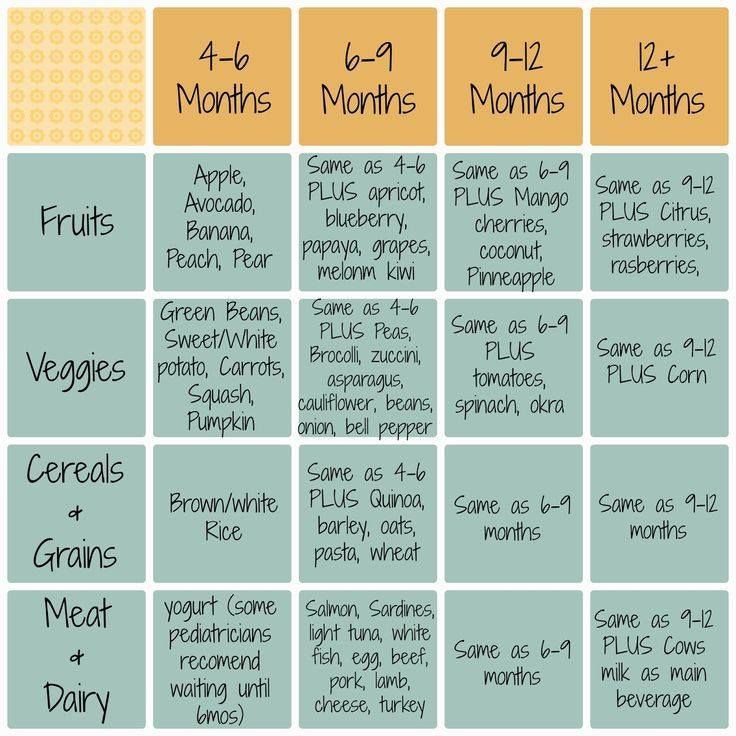 Later, as new foods, vegetables and fruits are introduced into complementary foods, they are offered in the form of finger food, such as boiled broccoli or cauliflower. In general, the child can be offered almost all products in the form of finger food, which is introduced into baby food.
Later, as new foods, vegetables and fruits are introduced into complementary foods, they are offered in the form of finger food, such as boiled broccoli or cauliflower. In general, the child can be offered almost all products in the form of finger food, which is introduced into baby food.
Should the product be peeled or not?
We give an apple to a child without a peel. The first finger foods in the form of vegetables and fruits are given without skins. Yes, the skin of many fruits and vegetables contains valuable nutrients. It is often recommended to leave the skin on in order to take full advantage of the nutrients contained in the product. But removing the top layer from fruits and vegetables helps reduce the amount of pesticides that may be in the product. Peeling fruits and vegetables helps avoid choking hazards due to the rough texture of the skins. The peel also usually sticks to the palate in the child's mouth, thereby hindering him, and can be there for a long time, and when the child swallows, the probability of choking in the absence of an adult nearby is higher. Getting rid of the skin at the beginning of complementary foods also helps prevent disorders
Getting rid of the skin at the beginning of complementary foods also helps prevent disorders
digestion. And we also take into account that there are some vegetables and fruits, such as pumpkin and avocado, which need to be peeled, because their peel is really inedible. It is not worth getting rid of the product from the peel for a long time, only at first. Usually the first couple of months of complementary foods and exposure to finger food. Then the product with the peel is given to the child in the presence of an adult, after which it is advisable to check the baby's mouth to see if he swallowed everything. Forcibly open your mouth should not be, play the game "Show your tongue or where are your teeth." By the age of 1.5, the child copes well with the peel of fruits and vegetables, if it is too rough, then it easily spits it out.
Choking
The presence or absence of teeth does not mean that a child can chew. Sometimes children can bite off a piece of food, try to swallow it whole and choke, so never leave a child alone while eating. Some children can store food in their mouths like hamsters, so we always check to make sure the child has swallowed everything before leaving the kitchen. You can read the article on suffocation here.
Sometimes children can bite off a piece of food, try to swallow it whole and choke, so never leave a child alone while eating. Some children can store food in their mouths like hamsters, so we always check to make sure the child has swallowed everything before leaving the kitchen. You can read the article on suffocation here.
Our finger foods
At first I gave biscuits to my first child, later I switched to a fresh apple, mostly fresh fruits, he sucked and procrastinated them more than he ate. Later, food appeared in the form of a toy, i.e. we crumbled it, crushed it, and sometimes something got into our mouths. However, since breast milk is always given at the end of complementary foods, I was not too worried about whether the baby was full or not.
With the second child, finger food was a gradual transition from the nibbler. We used it for about a month, then I ventured to give the first pieces of food. But to be honest, the child himself tried the first pieces of food, namely, he stole an apple and took a bite. The first experience of finger food is always scary, because at first the child often coughs and spits out food, he is learning, so it is important to be with the child, if something goes wrong, then the parent will be able to provide first aid. I remind you that the child is suffocating quietly, not a single sound. If he coughs, clears his throat, then everything is within the normal range, you need to help get rid of the food that interferes. Rules for helping with choking know before introducing finger food into complementary foods. It is imperative to look and study, and then give a new consistency of complementary foods.
The first experience of finger food is always scary, because at first the child often coughs and spits out food, he is learning, so it is important to be with the child, if something goes wrong, then the parent will be able to provide first aid. I remind you that the child is suffocating quietly, not a single sound. If he coughs, clears his throat, then everything is within the normal range, you need to help get rid of the food that interferes. Rules for helping with choking know before introducing finger food into complementary foods. It is imperative to look and study, and then give a new consistency of complementary foods.
Of course, at first, only one type of finger food is placed in front of the baby, later a plate is bought, divided into three to five sections, which is filled with finger food. The baby is already given a choice of what to eat, so you can easily determine the taste preferences in nutrition.
Finger food quick hacks
- The first finger food should be well kneaded between the gums.
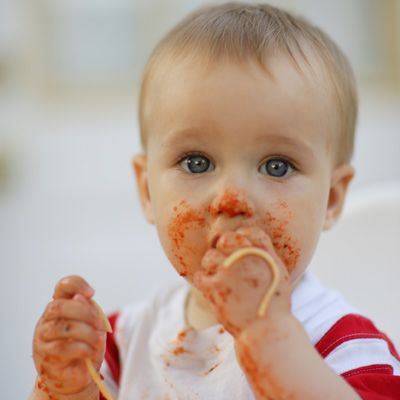
- Food in pieces should be age appropriate - do not offer whole eggs to an 8 month old baby .
- If the child cannot raise his head and sit up without help, do not offer him finger food.
- The child should always sit in an upright position, not walk, especially at the first meeting, when he is offered baby food in the form of pieces, to avoid suffocation.
- NEVER leave your child unattended when serving finger food.
Examples of finger food
The first finger food is a biscuit or a baked apple. Those. food that does not need to be chewed, it melts easily in the mouth without additional help from the child. You can start with foods that have been well received by the child in a pureed form on a spoon, serving them in convenient cubes or pieces - the size of a pea for harder items, the size of a stick or wedge for softer foods.
Examples of finger food are:
Click me!!!- pieces of soft bread or crackers
- Soft cheese, Chedder or Mozarella
- Banana
- Ripe pear without peel
- Ripe soft green apple without a peel, the first time you can give boiled
- Boiled cabbage
- .
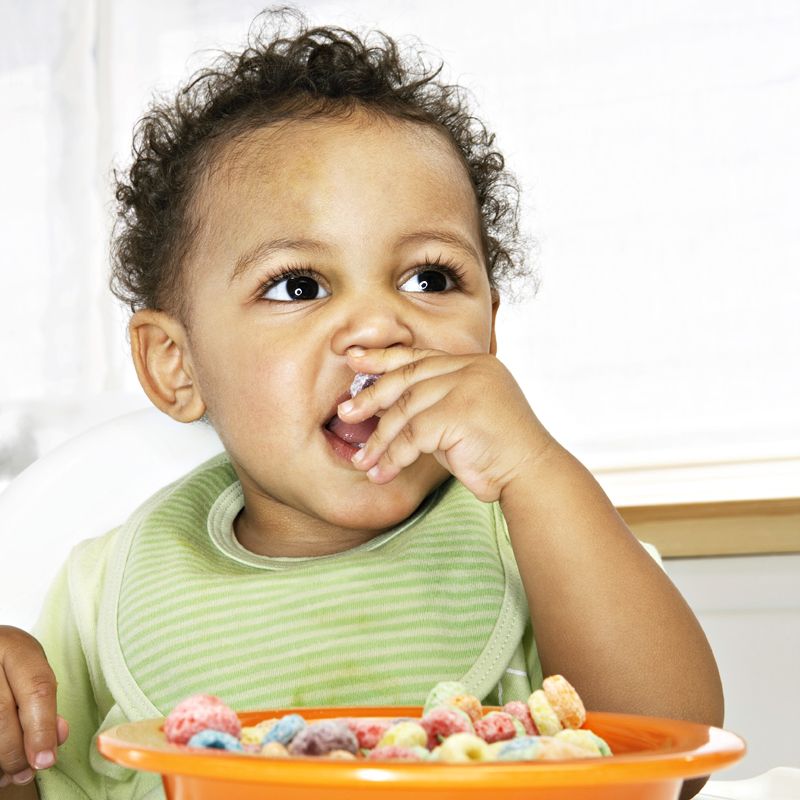 carrots
carrots - Boiled potatoes
- Boiled green peas
- Boiled pumpkin
- Boiled fish
- Boiled meat in the form of meatballs
- Pasta
- Quail eggs, etc.
*All products must be familiar to the child or introduced into complementary foods.
Finger Foods to Avoid
When it comes to feeding your baby with morsels, the biggest problem is preventing choking. So we do not allow him to eat anything without the presence of parents or any adult nearby. And we exclude any food that can get stuck in the child's airways:
Click me!!!- Popcorn,
- Nuts, peanuts,
- raisins and other dried fruits,
- raw vegetables (e.g. carrots),
- grapes,
- Circles without bones, hard fruit and vegetables with a peel of
- Zhevaliy Confinctions
- popcorn, pretzels, corn chips and other snack foods
- marshmallows, etc.
Most doctors do not recommend these foods until the child can eat them safely - around 4 years (although it depends on the child, closer to 3 or 5 years).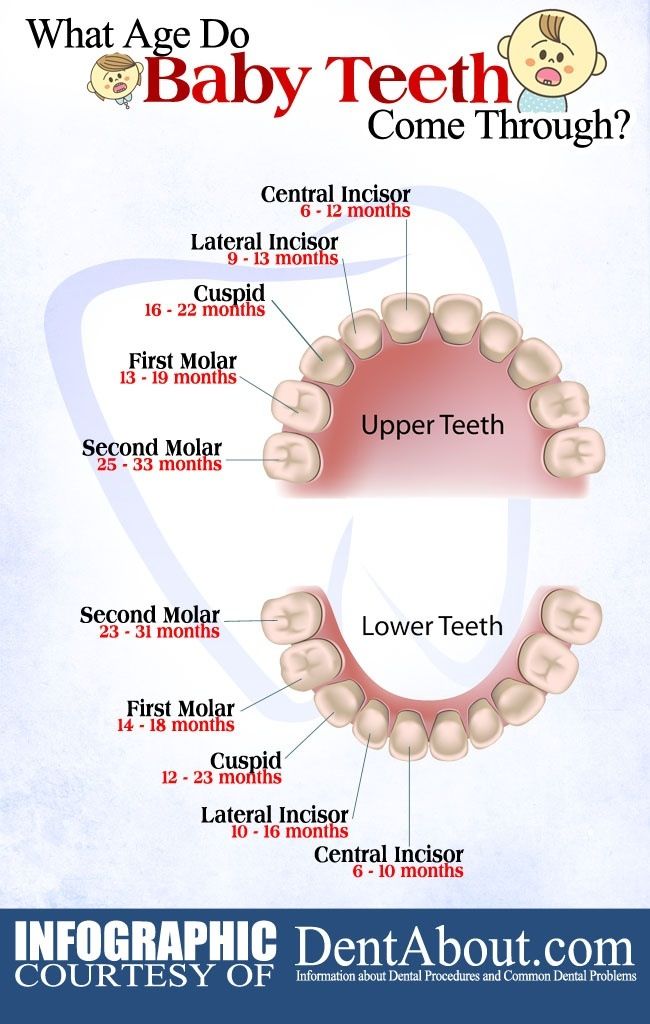
We are not afraid and add me to VK and Odnoklassniki, Instagram!
Like this article? Subscribe to site updates
"Encyclopedia Baby Food"!
Don't forget to bookmark us! (CTRL+SHIFT+D) Subscribe to the site, comment, share in social networks.
Our website Encyclopedia Baby Food has useful information on the nutrition of your children, which is useful for everyone, and we update the website "Encyclopedia Baby Food" constantly and try to search and write only excellent, verified and necessary information for you and your children.
Disclaimer No. 1: It must be understood that the author of the articles on the Baby Food Encyclopedia website is not a medical staff, “I am not a doctor.” The information I share is based on my own experience. My goal is not to teach you how to eat or feed your child, but to talk about how we did it, what new things I learned or read. This expands the picture of Baby Food knowledge, gives you a glimpse of the whole process so you can decide if you like it or not.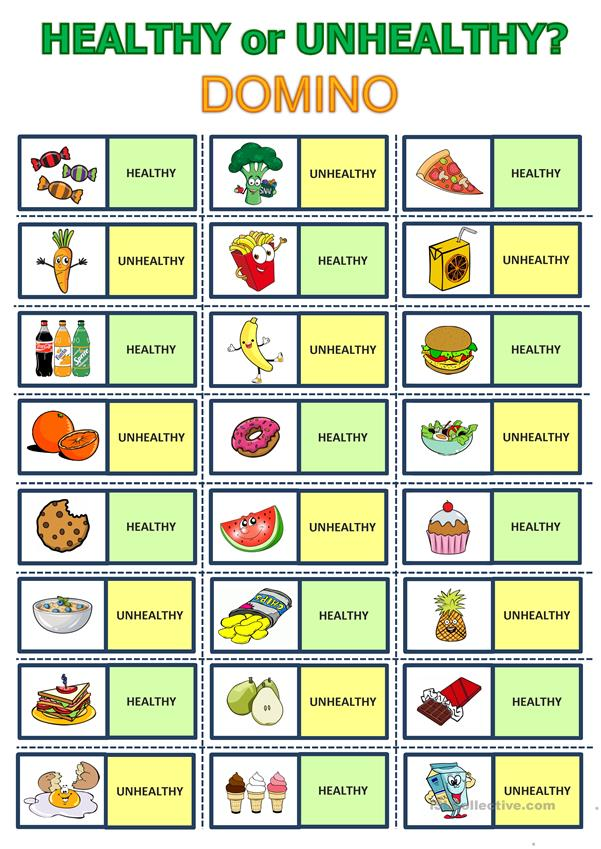
Disclaimer No. 2 : However, the above does not replace visiting a pediatrician. Before you start complementary foods, you need to get his professional opinion on the best way to introduce new foods for your baby. I also draw your attention to the fact that you need to look at the original date of the published articles, because some of the "best practices" may have changed. Always check with your child's pediatrician about complementary foods and their health.
Disclaimer #3: Keep in mind that every family is unique, every situation is also completely unique. There are no universal solutions. Only you can find what works best for you. Certain goals require certain sacrifices and priorities - not everyone wants to make that choice, and that's GREAT! Just know what you want to achieve, and be ready to get to work, putting the best of your strength!
Disclaimer No. 4: On the Encyclopedia Baby Food website, photos from books on baby food with attribution are used to better understand the information (Article 1274, Clause 1, Part Four of the Civil Code of the Russian Federation). Literature on baby food is found in the public domain on the Internet.
Literature on baby food is found in the public domain on the Internet.
Disclaimer No. 5: Content, editing, proofreading, layout, etc. produced ONLY by the author of the site Encyclopedia Baby food. Therefore, I apologize for spelling, punctuation and stylistic errors. If you notice a mistake, please report it, and do not write angry comments about the illiteracy of the author of the article.
Apricot puree with chicken
Banana-apple puree
Banana puree
Borsch
Broth with peas and rice
Baby mashed potatoes with cottage cheese and fruits
Home yeast bread with linen flour
Home cheese
Homemade pizza
Breakfast on the street
Opel from kolrabi
Baked carrots
Baked carrots and cherries with a prose of 9019 white beans
Cabbage salad
Mashed potatoes
Quinoa and pumpkin porridge
Quinoa porridge
Breakfast cereals
Quinoa and apple
Strawberry puree
Strawberry puree with banana
Strawberry compote
Compote of wild apples and raspberries
Compote of dried fruits steamed in a thermos for a baby over 8 months old
Corn porridge
Corn porridge with pear
Corn porridge with pumpkin
Corn porridge with pumpkin and carrot199 Corn porridge with apple and carrots
Chicken liver in the oven
Chicken cutlets with carrots
Chicken with carrots, sweet peppers and potatoes
Navy pasta
Pasta with orange sauce
Pasta with Gremolata
Muffins with vegetables and egg
New potatoes in their skins
Vermicelli milk soup
Carrot and potato puree
Carrot and rice casserole
Carrot with chicken
Fly agaric from eggs and tomatoes
Tarragon meat envelopes children
Cauliflower and carrot vegetable puree
Vegetable soup with corn semolina
Vegetable soup with cheese and corn semolina
Vegetable soup with spinach
Vegetable puree soup with bell pepper
Oatmeal porridge
pancakes from polons
on hot kefir
omelet in the package
omelet with broccoli and cauliflower
omnete with spinach and cheese
Persian puree
pies of 7 months +
cup
Rice and zucchini pie
Fish pie
Fish and potato pie
White cabbage pizza
Lavash pizza
Zucchini, tomato and sausage pizza
Tomato and olive pizza
Spinach pizza
Rabbit pilaf
Chicken pilaf with green peas and corn
Banana and cherry puree
Banana, cottage cheese and porridge puree 4 grains
Broccoli (cauliflower) puree
Broccoli, squash and cauliflower puree
Blueberry puree
Pear puree
Pear and banana puree
Pear and banana puree, baked
Pear and pumpkin puree 7 months +
Pear, pumpkin and peach puree
Pear, apple, plum and prunes puree
Blackberry puree
Turkey puree
Zucchini puree
Zucchini and broccoli puree
Zucchini, carrot and potato puree
Quinoa and banana puree
Quinoa and carrot puree
Quinoa, banana and carrot puree 9019
Quinoa, peach and raspberry puree
Quinoa, cauliflower, apple, pea and mint puree
Quinoa, apple, pear and raisin puree
Quinoa, apple, carrot puree
Rabbit, broccoli and mint puree cauliflower
Chicken, carrot, potato, apple and pea puree
Raspberry, cherry and banana puree
Carrot puree
Carrot and apple puree
Carrot, potato, broccoli puree with cheese
Carrot, potato, apple and quinoa puree
Carrot, pumpkin, apple and prunes puree
Carrot, apple and potato puree
Turnip and carrot puree
Plum puree
Cottage cheese, strawberry and banana puree
Pumpkin puree
Pumpkin and banana puree
and zucchini
Pumpkin and apple puree
Pumpkin, apple and banana puree
Cauliflower and broccoli puree
Cauliflower and potato puree
Cauliflower and rice puree
Cauliflower and apple puree
Cauliflower and green pea puree and courgette
Cauliflower, turkey and potato puree
Cauliflower, potato and courgette puree
Cauliflower, carrot and broccoli puree
Cauliflower, carrot, cheese and rice puree
Cauliflower, apple and courgette puree
Zucchini puree
Zucchini and potato puree
Zucchini, carrot and apple puree
Cherry puree
Blueberry puree
Prune puree
Apple, pumpkin, carrot and some apple curry puree
Toy apple puree apple and strawberry puree
Apple, strawberry and cherry puree
Apple, peach and banana puree
Carrot and pumpkin puree
Cottage cheese and banana puree
Turkey, potato and carrot stew
Zucchini, carrot and broccoli stew
Fish, potato, carrot and broccoli stew
Rice porridge
Whole grain rice porridge
Rice porridge with carrots
Rice porridge with pumpkin
Rice porridge with apples
Rice porridge with apple and pear
Rice porridge with apple and pumpkin
cutlets with vegetables
Ready-to-cook fish
Fish meatballs with ketchup
Fish soup for children
Fish soup with salmon and celery
Carrot and kohlrabi salad
Chickpea salad
Chickpea and cabbage salad
Laziest Soup
Creamy Kohlrabi Soup
Oatmeal Smoothie
Pot Sauce
Cheesy Pizza Sauce
Pea and Bacon Soup
Roasted Vegetable Soup
Kohlrabi Soup
Cauliflower Soup
Salmon Soup with potatoes and turnips
Meatball soup for the picky eater
Kohlrabi puree with green apple
Rabbit, pumpkin, potato, broccoli and cauliflower soup
Beetroot puree
Pumpkin puree with mushrooms
Celery Broccoli Soup
Pork Potato Carrot Soup/Stew
Cheburek Chebureks
Pumpkin Cheese Sauce (Annabelle Carmel Recipe)
Buzz Lightyear Sandwich
Pumpkin-Apple Puree
Pumpkin-Apple Juice
Pumpkin Juice
Pumpkin Juice puree soup
Fruit salad
Mango fruit salad
Lavash bread
Cauliflower with cheese
Linden and thyme tea
Experimental pasta and lentil soup puree
Apple puree
Apple juice
Baby foods - what and when to give.
 Is it possible to farm products?
Is it possible to farm products? What to add to the baby's diet besides milk after 5 months? Can farm products be used? What is better vegetables, fruits or cereals? What is the best way to make baby smoothies? We decided to find out the opinions of five well-known health experts about what should be complementary foods for a child up to a year old.
Dr. Joel Fuhrman, Family Medicine Practitioner, Nutritionist, Author of Disease-Proof Your Child: Feeding Kids Right
“I recommend starting the first weaning food with mashed banana mixed with breast milk or organic brown rice baby porridge diluted with breast milk or water. Gradually, you can introduce fresh fruits into the diet: apples, pears, peaches, papaya. If you offered fruit at one feeding, then next time give your baby steamed and blended vegetables, such as asparagus combined with sweet potatoes, green peas, corn, carrots.
Fruits and vegetables - exclusively organic. Strawberries and citrus fruits in the diet should be postponed until 12 months - they can provoke an allergic reaction. From 9months, you can offer pastes and urbechi from fresh nuts and seeds (except for peanuts). Before 12 months, it is better to avoid the following foods: cow's milk, butter and vegetable oil, cheese, wheat, any sweeteners, honey, salt.
Strawberries and citrus fruits in the diet should be postponed until 12 months - they can provoke an allergic reaction. From 9months, you can offer pastes and urbechi from fresh nuts and seeds (except for peanuts). Before 12 months, it is better to avoid the following foods: cow's milk, butter and vegetable oil, cheese, wheat, any sweeteners, honey, salt.
Lilia Kulikova, pediatrician, highest category (3 children and 2 grandchildren).
From the age of six months, you can add various foods to your baby's diet, which can be conditionally divided into 2 groups.
Foods given with mother's milk (or formula).
- Fruit puree
Enter it first.
at 5 months - 50 gr. per day,
at 6 months - 60 gr. per day,
by the year - 100-120 gr. per day.We start with applesauce, the first time we give the baby on the tip of a spoon in the morning. We give 4-5 days, then increase the dose.
 Puree should not contain sugar and it is best to make it yourself from farm products, you can of course buy a finished product, but then be sure to check the expiration date on the jar. Fresh fruits: apples, pears, it is better to bake or boil, chop kiwi and banana in a blender.
Puree should not contain sugar and it is best to make it yourself from farm products, you can of course buy a finished product, but then be sure to check the expiration date on the jar. Fresh fruits: apples, pears, it is better to bake or boil, chop kiwi and banana in a blender.
- Cottage cheese
Starting at 6 months. We begin to introduce from the tip of a spoon gradually increasing the portion, 8-9 months 25 grams, by the year we bring it to 50 grams. It is best to give cottage cheese before 18.00, if the baby does not want to eat just cottage cheese, you can mix it with fruit puree. Cottage cheese can only be given special, for children. You can buy it in any children's nutrition department.
- Yolk
We start introducing after 6 months. The yolk is given with milk or added to the vegetable mixture. You can not mix the yolk with cottage cheese. We start giving from the middle of the yolk, a portion of “2 match heads”, by the year we bring it to 1 yolk, if the child has not had allergic reactions to any products before, If they are prone to allergies, they give 1/2 yolk by the year.
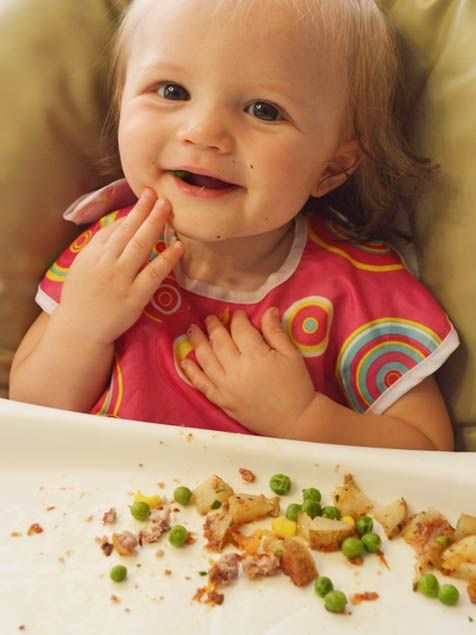 When choosing eggs, check the expiration date. The child can be given both chicken and quail.
When choosing eggs, check the expiration date. The child can be given both chicken and quail.
- Juice
Juice is also given to a child from the age of 6 months. You can only give children, diluting it with boiled water 1: 1. It is best to cook fruit compotes for a child (apples, pears, prunes). Do not use raisins and sugar. Closer to the year, you can add fructose to the compote.
- Lemon
After 1 month, start adding 1-2 drops, gradually increasing to 10 drops.
Complementary food that replaces 1 breastfeeding (formula).
- Porridge
Dilute in water or breast milk (mixture) to the state of fruit puree.
Up to 8 months only corn, buckwheat, rice. We start with 20-30 ml. gradually increasing, once a laziness from a spoon. First we give in the morning, then in the evening, so that the child sleeps better, but not just before bedtime.

By 8 months we bring to 150-180 gr. We start with corn - 3 days, then buckwheat - 2 days, and then rice - 2 days, on the following days we change cereals every day. First we give porridge and breast milk. When we bring it to 180 gr, you can give it to drink with water or juice. That is, if the child eats 240 ml of the mixture (breast milk), we pour 30 ml. we breed porridge on it, and let everything else be drunk.
After 8 months you can give semolina and oatmeal, mixtures of cereals.
- Vegetables
1 day - marrow
Day 2 - zucchini + cauliflower
Day 3 - zucchini + cauliflower + potatoes
Day 4 - zucchini + cauliflower + potatoes + carrots, etc. You can also pumpkin, turnip, sweet pepper.Not allowed : red, onion, pepper, salt, garlic, cucumber, radish, green onion, mushrooms, radish, eggplant. You can not all red foods, such as strawberries, grapes, tomatoes. When choosing vegetables and fruits, give preference to yellow and green.

How to cook : Wash vegetables and keep in water for 30 minutes. What was cooked can be given for 2 days, after which we cook again. You can add vegetable oil to boiled foods from 6 months, 0.5 tablespoons, by the year a teaspoon. Vegetable puree can be given from 6 months at lunchtime. It is better to cook it yourself or mix it with ready-made (canned) mashed potatoes. We start with zucchini or cauliflower. We give as porridge - 30 ml. by 8 months up to 180 ml.
- Meat
Can be given from 7 months old, added daily to vegetable puree. Meat can be bought at the store, or you can cook it yourself from farm products. Beef, lean pork, chicken, turkey. We start with 1.3 tablespoons, bring up to 25 gr. by 9months, then 50 gr. up to a year.
- Fish
Possible from 10 months. You can use any, but low-fat grated fish - 1-2 times a week.
- Black tea
Can be given, but very weak tea leaves.

Sample feeding schedule
The schedule is made individually for each child, be sure to check with your pediatrician.
- 5 months - fruit puree, give 2 weeks, then we introduce another product, then we introduce, for example, porridge;
- 5.5 months - porridge, give 2 weeks, then introduce another product, such as cottage cheese;
- 6 months - cottage cheese, give 2 weeks;
- 6.5 months - vegetable puree, give 2 weeks;
- 7 months - meat, give 2 weeks;
- 7.5 months - yolk, give 2 weeks;
- 8 months - juice, give 2 weeks;
- 10 months - fish, give 2 weeks.
You can start introducing new food only for one product, without excluding anything that you ate before.
Kimberley Snyder, Dietitian, Bestselling Author of The Beauty Detox Solution, Founder of Glow Bio, Emerson's Mom (1yr 3m)
which he drank one teaspoon almost every day, no special purees were made for him.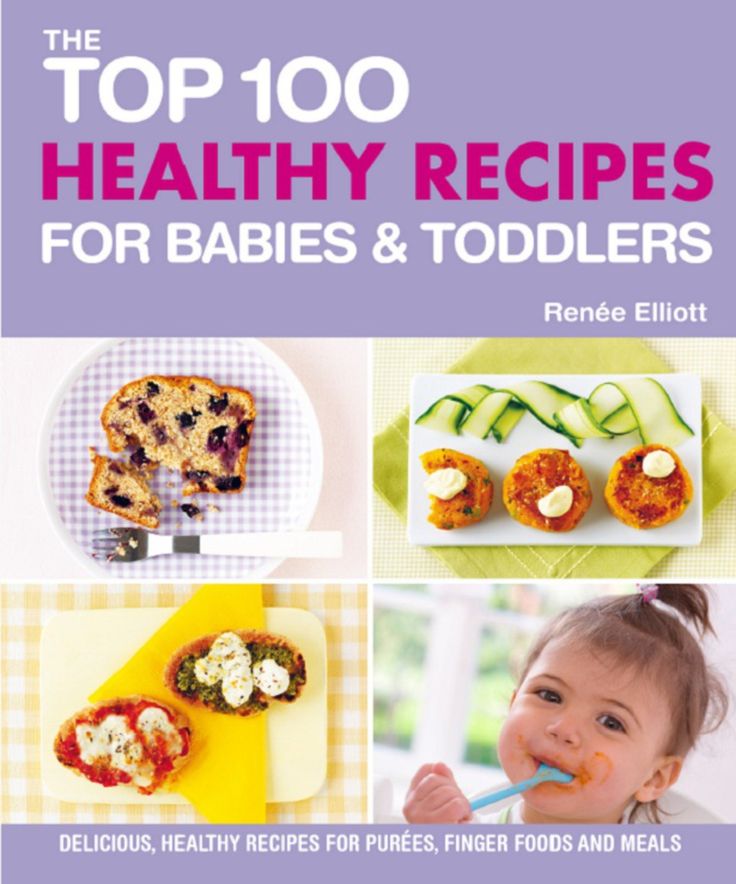 At about 7 months old, I started giving my son pieces of normal food that he could take and chew himself: broccoli, carrots, pumpkin, zucchini and other vegetables, steamed, and a variety of fresh fruits, cut so that the child can comfortably grab them with his fingers . And don't be put off by the fact that children this age may not have teeth - they grind food very effectively with their gums. Why did I decide to take this approach? Firstly, it is very natural: not all people in the world have blenders, and secondly, this process teaches babies to chew before swallowing; thirdly, it gives them an invaluable experience of interacting with food, its various textures and tastes, they learn to eat at such a speed and in such volume that their body requires.
At about 7 months old, I started giving my son pieces of normal food that he could take and chew himself: broccoli, carrots, pumpkin, zucchini and other vegetables, steamed, and a variety of fresh fruits, cut so that the child can comfortably grab them with his fingers . And don't be put off by the fact that children this age may not have teeth - they grind food very effectively with their gums. Why did I decide to take this approach? Firstly, it is very natural: not all people in the world have blenders, and secondly, this process teaches babies to chew before swallowing; thirdly, it gives them an invaluable experience of interacting with food, its various textures and tastes, they learn to eat at such a speed and in such volume that their body requires.
My son's favorite foods during the first few months of weaning were bananas, avocados, sweet potatoes, broccoli, zucchini, carrots, steamed green beans and yellow lentils. I don't salt my child's food."
Colin Campbell Professor of Biochemistry, Physician, bestselling author of The China Study (5 children and 7 grandchildren)
onions, carrots, asparagus, pumpkin, tomatoes, beets, celery and potatoes. Closer to the year, you can add broccoli, cauliflower, green beans - after all, these vegetables are more difficult to digest. No animal products in the diet!”
Closer to the year, you can add broccoli, cauliflower, green beans - after all, these vegetables are more difficult to digest. No animal products in the diet!”
Mark Hyman, nutritionist, physician, bestselling author of Eat Fat, Get Thin
for someone later. Start with steamed sweet vegetables: carrots, sweet potatoes, pumpkins. Feel free to mix them with more neutral-tasting or slightly bitter vegetables. Also gradually introduce seasonal fruits (apples, pears, peaches). From cereals, it is better to choose millet, oatmeal, amaranth, brown rice. Closer to the first year of life, beans, peas, lentils, fish, chicken, meat, tofu will appear in the diet.
I recommend not giving dairy products to children until at least two years of age. Studies have shown that early consumption of cow's milk contributes to the development of allergies, lowers immunity and increases the chances of respiratory diseases.
Carlos González, pediatrician, author of My Baby Doesn't Want to Eat (father of three)
“Don't force your child to eat. Never, in no way, under any circumstances, for any reason.
Never, in no way, under any circumstances, for any reason.
It doesn't matter where you start complementary foods, as there is no reason to prefer this or that food. The main thing is variety, that is, the diet should include grains, legumes, vegetables, fruits.
If a child eats breast milk and then refuses fruit, then nothing terrible will happen; but if he first eats fruit and then does not want breast milk, he will lose a lot.
The only food that can satisfy all the needs of the human body at once - at least for a certain period of life - is breast milk. A newborn is perfectly fed for 6 or more months only with breast milk.
Every person, every creature has innate mechanisms that make him look for the right food and eat the right amount of it. And why are we sure that our children are deprived of these mechanisms? The babies of other species have them.
Children prefer familiar foods and are wary of new foods. This is one of the protective mechanisms that protects the child from poisonous plants and animals.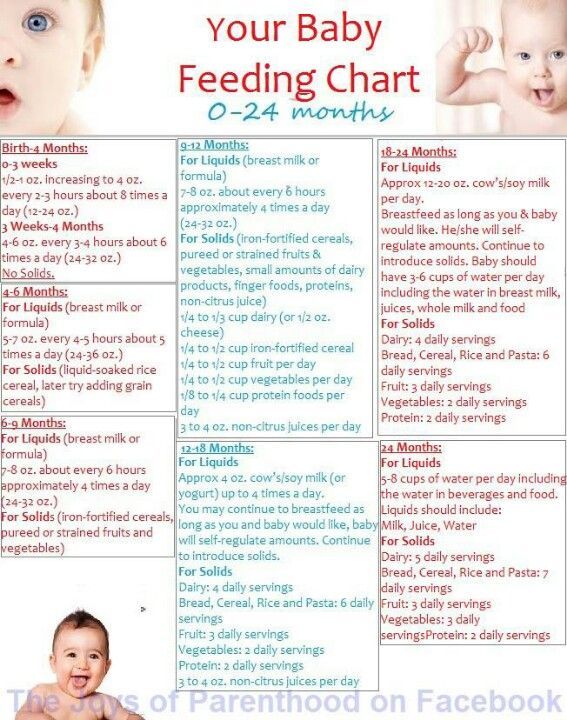 If children regularly see what their parents eat, they themselves begin to eat these foods.
If children regularly see what their parents eat, they themselves begin to eat these foods.
Natalia Rose, Nutrition and Detox Specialist, Author of Detox For Women (Mom of Three)
“I recommend fresh raw fruit for the first meal, as it is ideal for baby's digestion. Start with easier-to-digest fruits: enter watermelon first, and then move on to melon. If you are introducing your first solid foods in winter, start with an apple, banana, and avocado.
If the baby responds well to fruits and there are no problems with digestion, gradually move on to new fruits and berries. However, I do not recommend strawberries and honey in the first year of life. You may need to add a little water to denser fruits such as bananas to get the right consistency.
It is widely believed that if fruits and not vegetables are introduced into the baby's diet first, then he will have a sweet tooth and then will not want to eat vegetables at all. This is not true. Children love fruits because they are the purest and most vitamin-rich foods. The desire to eat vegetables will gradually appear, it is important not to force. Fruits are the most natural food for humans, and children naturally want them. Like mother's milk, they have a sweet taste and are very satiating.
Children love fruits because they are the purest and most vitamin-rich foods. The desire to eat vegetables will gradually appear, it is important not to force. Fruits are the most natural food for humans, and children naturally want them. Like mother's milk, they have a sweet taste and are very satiating.
After you have introduced a variety of fruits, move on to smoothies. Smoothies for toddlers are a great option: they're easy to make (you only have to use the blender once, and the smoothie lasts all day), they're incredibly nutritious, perfect for digestion, and your little one will love them.
Three ingredients must be present in the smoothie:
- Fruit
- Greenery
- Fats
Use fruits as a smoothie base, add some greens and avocado or a drop of vegetable oil, which promotes brain development. Feel free to experiment with the ingredients, but make sure that the baby tastes good. Don't go overboard with the greens - if you're using the leaves instead of the green juice, make sure it's well mixed with the fruit.




